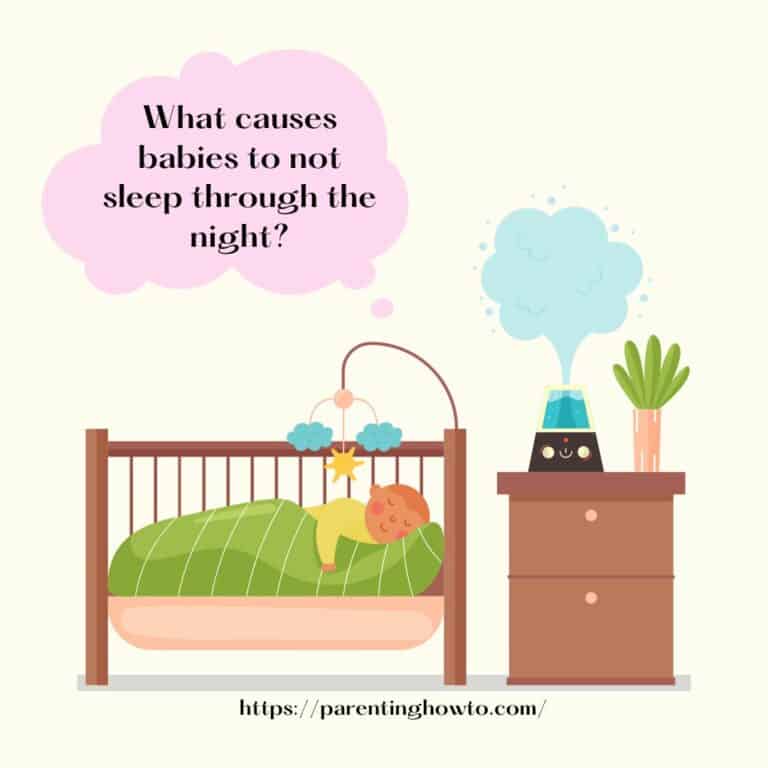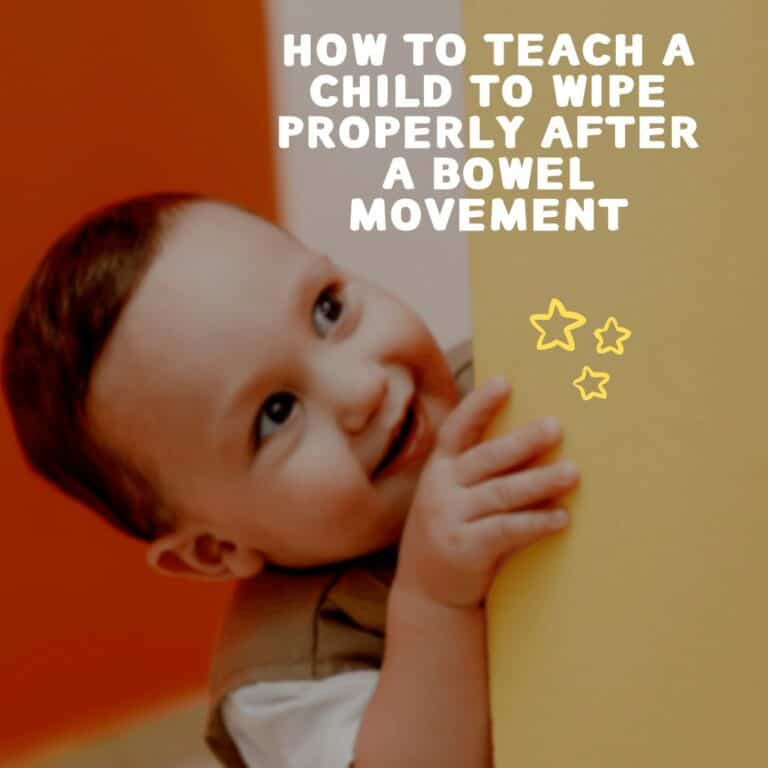New parents, don’t worry! Gas pain is a common issue for newborns, but luckily it’s not too difficult to relieve. In this blog post, we’ll explore the best and safest ways to help your little one find relief from gas pains. Read on to discover the most effective methods for soothing your baby’s discomfort.
Understand the Different Types of Gas in Newborns

Gas in newborns is a common occurrence, as their digestive systems are still developing. There are three different types of gas that can be experienced: swallowed air, intestinal gas, and trapped wind.
Swallowed Air: Swallowed air is the most common type of gas in newborns and occurs when the baby swallows too much air during feeding or crying. This air can cause discomfort and pain for your little one. To help relieve this type of gas, it is recommended to burp your baby frequently during and after feeding or when they seem uncomfortable.
Intestinal Gas: Intestinal gas occurs when bacteria ferment food particles in the intestines. This can result in bloating, discomfort and sometimes flatulence. To help reduce this type of gas, it is best to feed your baby smaller amounts more often rather than larger amounts less frequently.
Trapped Wind: Trapped wind is caused by an imbalance between pressure inside the abdomen and outside the abdomen, usually due to poor positioning or drinking too quickly from a bottle. To help relieve this type of gas, try gently massaging your baby’s belly in a clockwise direction or using bicycle motions with their legs while laying them on their back. Additionally, you can also use medication such as Simethicone drops which helps break down trapped bubbles of air so that they can be passed through more easily without causing discomfort for your baby.
By understanding the different types of gases present in newborns you will be better equipped to provide relief for your little one when they experience any kind of discomfort due to gassiness.
Check for Signs of Intolerance

Babies are naturally gassy, but it’s important to be aware of signs of intolerance. If your baby is displaying any of the following symptoms, they may be experiencing gas pains:
1. Frequent spit-ups.
2. Reduced appetite or difficulty eating.
3. Crying during or after feeds.
4. Excessive burping and hiccups.
5. Abdominal bloating and cramping.
6. Abnormal stools (e.g., green stools, mucus in the stool).
If you’re concerned your baby may be experiencing gas pains due to a food intolerance, contact their doctor right away for help with diagnosis and treatment options that are right for them. In the meantime, you can help relieve gas pain by elevating their head above their stomach and burping them frequently during feeds, as well as applying gentle pressure to their tummy when they are fussy or displaying abdominal discomfort
Breastfeed More Frequently

Breastfeeding is one of the most important and beneficial things that you can do for your baby. It provides optimal nutrition, helps to boost immunity, and strengthens the bond between mother and baby.
Breastfeeding more frequently can help to reduce gas in newborns, as it can help to ease any air bubbles that are swallowed while eating. It also helps to stimulate the digestive system, which can help reduce gas buildup.
Nursing more often may also provide comfort and security to your little one, which in turn may reduce fussiness and crying. Your baby’s cues will be the best indicator of when they need to nurse; some babies will want to feed every hour or two, while others may be content with feeding every three hours or so.
Burp Baby During Feedings

Burping your baby during feedings is an important part of keeping them comfortable and helping them to digest their food properly.
Burping helps to release air bubbles that can become trapped in your baby’s stomach while they are feeding, which can cause discomfort and pain. To burp your baby, try lying them on their back and gently rubbing or patting their back.
You can also hold them upright with their head on one shoulder, and give gentle pressure on their chest with the other hand. If these techniques don’t work, you can try changing the position of the baby while they are being fed – sitting up rather than lying down – as this may help to release the air bubbles more easily.
It is also a good idea to burp your baby midway through the feeding and at the end of it so that any air bubbles are released.
Change Baby’s Position During and After Feedings

One of the best ways to relieve gas in newborns is to change their position during and after feedings.
When feeding your baby, make sure that their head is higher than their stomach.
This will help prevent air from entering their tummy and causing discomfort.
After they have finished nursing, try gently burping them for several minutes in order to release any trapped air bubbles.
You can also lay your baby on their back and move their legs in a circular motion towards the abdomen to help push out any additional gas bubbles.
Doing this a few times after each feeding may help ease any abdominal pain or discomfort associated with gas buildup.
Keep an Eye on the Amount of Milk or Formula Given
Keeping an eye on the amount of milk or formula your baby consumes is a great way to help reduce gas. If your baby is taking in too much milk at once, it can cause them to swallow air and become gassy.
Try to feed your baby smaller amounts at a time and burp them often during and after each feeding. If you are bottle-feeding, don’t shake the bottle vigorously when mixing formula, as this will add more air into the bottle.
You may also want to try a gentler or comfort formula for babies who may be having trouble digesting standard formulas. Finally, let the formula settle before giving it to your baby – this will help reduce air bubbles that can cause gas.
Avoid Overfeeding

Avoiding overfeeding your baby is very important for their health and wellbeing. It can help prevent gas, reduce the risk of ear infections, and support healthy growth.
When it comes to feeding your baby, it’s important to be mindful of how much formula or breastmilk you are giving them in one sitting. Overfeeding can cause discomfort for your baby as well as potential health risks. Signs that you may be overfeeding include: frequent spitting up, gassiness, irritability after eating, and large wet diapers.
It’s best to feed your baby with patience and pause between each meal to give them time to digest and settle before they’re ready for more food. A good way to know if your baby has had enough is if they turn away their head or stop sucking while feeding. If they are still hungry after a few minutes of rest then you can offer more food until they have had enough.
If you suspect that you may be overfeeding your baby then talk to your doctor or healthcare provider about ways that you can adjust the amount of formula or breastmilk that is being given at each mealtime.
Try Simethicone Drops
Simethicone is an anti-gas medication that is often used to relieve painful symptoms associated with excessive gas and bloating in infants. Simethicone works by breaking up gas bubbles in the stomach, allowing the baby to pass gas more easily and relieving discomfort.
It is available over-the-counter as infant gas drops, such as Mylicon, Little Tummy’s Gas Relief Drops, and Phazyme. These drops are gentle enough to be used after each feeding or as often as 12 times a day for babies who are colicky or have other digestive problems.
When using these drops, it is important to follow the instructions carefully. The best way to give them is by placing a few drops on the baby’s tongue right before or after feeding.
It may also be helpful to burp your baby during and after feedings to release any air bubbles that may be trapped in their stomachs. Additionally, keeping the baby’s head higher than their tummy while nursing or bottle-feeding can help reduce air swallowing.
Although simethicone infant gas drops are considered safe for most babies, it’s best to consult your pediatrician before giving them any medications or supplements. Simethicone should not be used if your baby has had an allergic reaction to simethicone in the past.
If you suspect that your baby’s excessive gas could be caused by something other than a food sensitivity or allergy, you should discuss this with your pediatrician so they can provide more specific advice tailored for your child’s needs
Massage Your Baby’s Belly

Massaging your baby’s belly is an effective way to help relieve gas and fussiness. This soothing technique can provide quick relief for a gassy tummy and is easy to do. It may also help your baby poop. Begin with organic coconut oil as your massage oil.
First, hold onto your baby’s calves and knees gently and then push both the legs together towards their tummy while holding it there for around five seconds. Then use the pads of your index and middle finger to trace an upside-down letter “I” on the left side of their belly.
Next, place your forefinger near their belly button and start to move in a clockwise motion, spiraling out to the edge of their belly. Progress from one area of their stomach to another, lightly pressing down on each spot as you go along until you are done with one full circle.
You can also try the colic carry by holding your baby with their tummy across your arm or lap while massaging their back which may be beneficial for easing discomfort due to colic as well. Lastly, keep an ear out for any baring-down sound that may indicate that they are finding relief from this massage technique! With this simple method, you will be able to provide much needed comfort for your little one’s gassy tummy in no time!
Ensure Proper Latch and Suction
To ensure proper latch and suction when breastfeeding, hold your baby close with your nipple level with their nose. Gently touch your nipple against their upper lip to encourage them to open their mouth wide. Support your baby during the process but don’t force the latch.
Monitor your baby’s latch to make sure they are taking in the areola and have good suction. You may want to massage your breast toward the nipple or use one hand to gently squeeze the breast while nursing.
Additionally, you can try infant massage on their tummy for gas relief by rubbing it clockwise and then counterclockwise. Lastly, use a hospital-grade electric breast pump to ensure complete milk removal after breastfeeding.
Conclusion

Gas in newborns is a common issue, often caused by their delicate digestive systems. Fortunately, there are many ways to help your baby with gas pain and discomfort.
Burping your baby during and after feedings can often be the best way to relieve gas in newborns, as well as reaching for baby gas drops or trying out tummy time.
If you’re still unsure, seek medical advice from your doctor. The most important thing is to make sure your little one is comfortable and happy!



